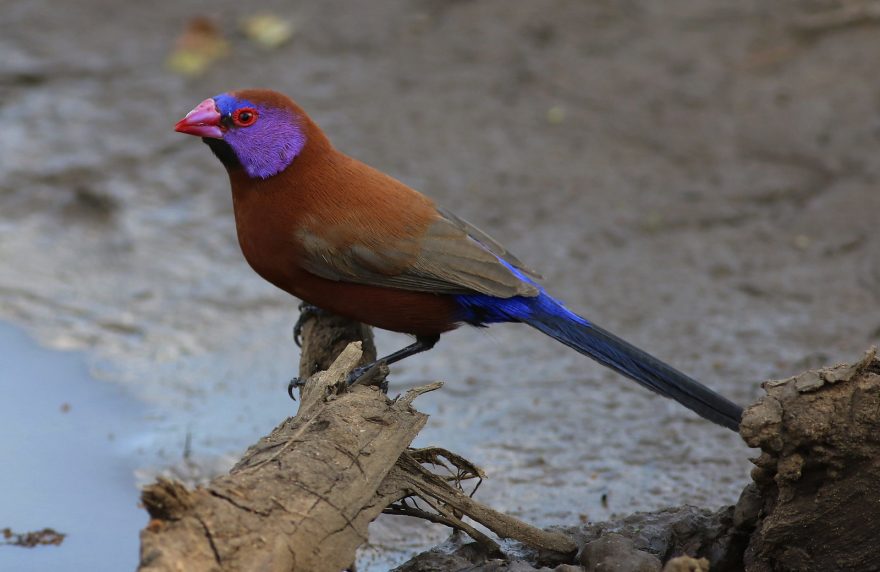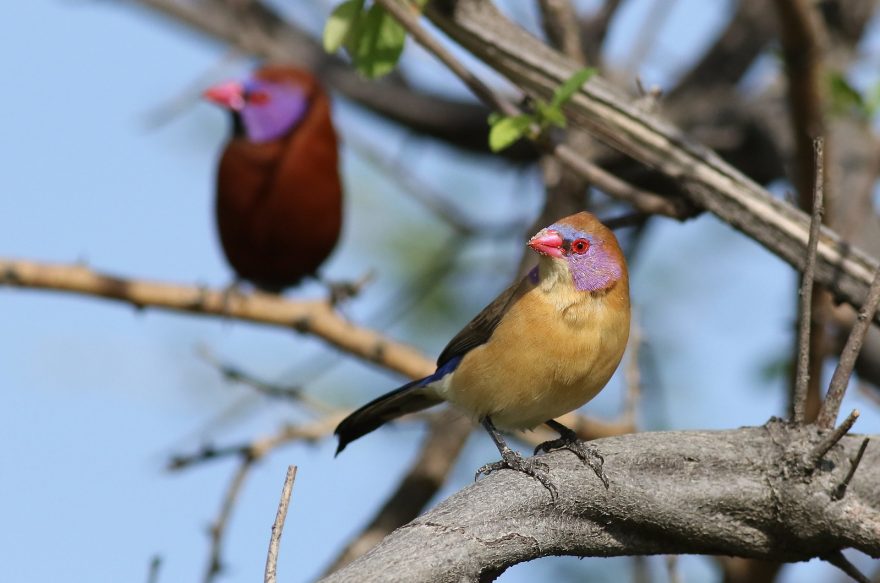The violet-eared waxbill is a estrildid finch found throughout drier parts of Southern Africa. Despite being common in their natural range, they are extremely rare and valuable birds in Australian aviculture, with pairs often fetching thousands of dollars.
Violet-eared waxbills originate from a hot and dry climate, and as such do not do well in colder areas. In much of the northern hemisphere, they are kept and bred in climate-controlled cages, however they can be suitably kept in outdoors in similarly warm and dry parts of Australia.

Diet & Feeding
A quality finch seed mix including canary seed and various millets forms the basis of the violet-eared waxbill’s diet. Sprouting seed increases its nutritional value and is an effective way to improve your bird’s health and breeding performance. Freshly grown green seed heads should also be offered frequently.
Some leafy greens should be provided throughout the year. Kale, bok choy, endive, and silverbeet are the most nutritious and will be readily eaten. Spinach can also be given, but only sparingly as it can contribute to calcium deficiency.
Live food is an important component of the violet-eared waxbill’s diet and should be provided throughout the year—particularly during the breeding season. Mealworms, maggots, termites, and small crickets will be consumed readily. Commercial soft finch food mixes can also be provided for an added nutrient boost, which is especially useful when breeding.
Do not feed anything from the list of forbidden foods.
Housing & Compatibility
Violet-eared waxbills are peaceful birds that do well in a mixed finch aviary, however, due to their rarity in Australian single-pair aviaries may be preferred.
They do best as one pair per aviary, however multiple pairs can be housed together in very large aviaries that allow each pair to establish a distinct territory.
They should not be mixed with finches in the cordon bleu family, as hybridization will occur.
Violet-eared waxbills demand privacy to breed, so a large planted aviary that provides plenty of hiding places is ideal. They are best suited to an aviary that provides thick shrubs or grasses.

Breeding
Best breeding results are achieved in spring through to late summer, with a hen bird that’s at least 12 months old. Better breeding results are usually achieved in the second year of breeding. These birds demand privacy to breed successfully and will not tolerate nest inspections.
Violet-eared waxbills will accept a wide variety of artificial nests, however they have a preference for dense brush situated well above ground level. They will construct a nest from fine strands of dry grass and line it with feathers. A new nest will generally be constructed for each subsequent clutch.
Do not house with any of the cordon bleu species, as they may produce hybrids.
They typically lay 3-6 eggs in each clutch, which are incubated by both parents for approximately two weeks. Young birds fledge the nest at three weeks of age and are usually independent after a further three weeks. Adult plumage is attained at three months of age.
Young birds should be separated from their parents when they reach independence to prevent aggression.
Sexing
Easy to visually sex as they begin to mature. Cocks have dark brown body feathers and an intense purple face mask, while hens are fawn with a much less vividly coloured face.
Mutations
There are no violet-eared waxbill mutations established in Australian aviculture.
Health
The violet-earned waxbill’s diet is high in live food, making them especially vulnerable to parasite infection. A strict worming and parasite control regime should be implemented to ensure their long-term health. We recommend Moxidectin Plus.
Healthy birds can be expected to reach approximately 6-7 years of age.